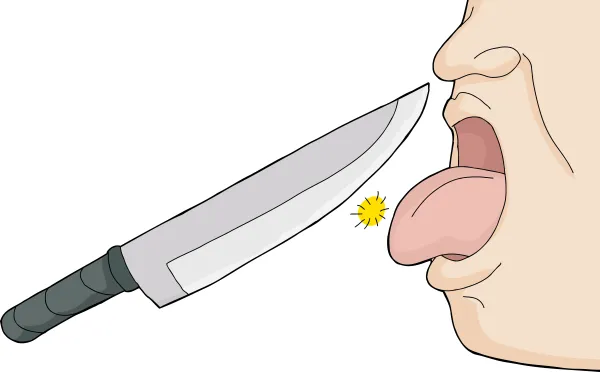Don't Let Op Report Oversights Make You Lose Out on Deserved Pay

When your surgeon dictates an operative report, he must take care to ensure that it should be specific and accurate enlisting the procedures performed not only at the top of the report but also in the procedural notes. This will enable you to know which procedures to bill for while ensuring you receive proper reimbursement.
Understand the Characteristics of a Balanced Operative Report
Procedures listed at the top but not described in the body of the operative report are presumed not to have been performed. ‘Not written, not done’ is the rule that you have to follow in these cases. If a procedure is described in the procedure notes but not at the top, it indicates that your oral surgeon is depending on your coding ability to glean which procedures were actually performed.
Operative reports also should have a Findings section that includes such items as the size of any lesion that was excised and the size of the wound after the excision.
The following operative report, which describes a number of procedures performed on an 82-year-old woman, illustrates how the failure to specifically and accurately describe procedures performed results in reduced reimbursement. You should also remember that improperly described procedures that are billed may be vulnerable to a future audit.
Initial Operative Report
Preoperative Diagnosis: Squamous cell carcinoma, floor of mouth.
Postoperative Diagnosis: Squamous cell carcinoma, floor of mouth.
Operation: Partial glossectomy, full thickness skin graft from chest wall.
Operative Findings: This is an 82-year-old woman who presented one year ago with diffuse leukoplakia on the ventral surface of the anterior third of her tongue on the left side, extending toward the floor of the mouth.
Biopsies were taken, which were negative for cancer. She was referred to an oral surgeon for carbon dioxide laser vaporization of the entire mucosa. This was performed without incident in his office and healing was uneventful.
She subsequently developed a lesion at the junction of the ventral floor of the mouth and tongue, which on biopsy proved to be a superficial squamous cell cancer. At surgery she was noted to have an area of irregular mucosa posterior to the biopsy site on the ventral surface of the tongue, which was biopsied. Frozen section diagnosis was benign. The tumor itself had a gross diameter of more than 1 cm with irregularity and induration on the mucosa but without palpable evidence of deeper invasion. No neck nodes were palpable.
Procedure: With the patient in the supine position under general nasotracheal anesthesia, the oropharynx was packed with a large sponge, soaked in saline for protection of the endotracheal tube during the use of the laser. Binocular laser safety eye shield was applied. The right upper anterior chest wall was prepared with Betadine and draped with plastic drapes. The face was prepared with PhisoHex. Standard surgical draping was then applied. A side biting mouth gag was inserted between the right upper and lower jaw, the lip of the tongue was grasped with a towel clamp for retraction. The lower lip was retracted inferiorly. The tumor site was identified. More posteriorly, the entire tongue was carefully examined and a small area of mucosal irregularity noted and biopsied with punch biopsy. The defect was cauterized with suction cautery. The specimen was sent to pathology and frozen section diagnosis was negative for tumor.
The SLT laser with frosted conical tip was then brought into use at a setting of 7 watts. The mucosal incision was carefully raked to completely surround the gross visible and palpable tumor and to include an adequate margin of grossly normal mucosa around it. Power was then increased to 15 watts and the mucosal incision was deepened to the muscular layer of the tongue. Full thickness tongue mucosa with some muscle was removed using the laser and more inferiorly the specimen on its underside incorporated some salivary gland tissue from lingual salivary glands. The medial border of dissection was the frenulum and care was taken to preserve the opening of the right submandibular salivary gland duct. On the left, the distal 2 cm of duct were sacrificed. Specimen was marked for identification of margins and sent for pathology examination. All margins, including the deep margin, were negative for tumor on frozen section. The operative site was packed with moist gauze.
Instruments and gloves were changed for graft harvest. The superficial drape was removed from the anterior superior chest and an elliptical incision parallel to the clavicle was outlined with methylene blue. The skin was excised and elevated off the subcutaneous tissue with sharp dissection. Hemostasis was achieved with disposable cautery. The incision was closed.
Attention was returned to the surgical defect. Meticulous hemostasis was achieved with suction cautery. The previously harvested graft was placed into the wound. The graft edges were approximated to the mucosal edges with #3-0 Vicryl sutures, which were left long to tie over a gauze bolus. This was performed circumferentially. The graft was then punctured with a scalpel in the middle for drainage. The graft was also approximated to deeper tissue with a #3-0 chromic catgut suture in its inferior position. A suitable bolus of Xeroform gauze was fashioned and laid into the sulcus on the floor of the mouth to put pressure against the entire graft and defect in the tongue and floor of the mouth. This was held in place by tying the long remaining ends of the Vicryl sutures over the gauze bolus. No tongue swelling was noted at the end of the procedure.
Know How Statement of Findings Would Alleviate Problems
Although this operative report does contain a section entitled Operative Findings, its contents actually reflect the patients history, not what your oral surgeon found while operating on the patient. In this instance, in the findings section you should have included the extent of the lesion(s) and what specifically was removed. For example, your oral surgeon’s findings should have stated: The lesion on the floor of the mouth measured 1.5 cm; the excision left a 3.5 cm defect; it included 2.0 cm of the tongue and 1.5 cm of the floor of the mouth.
Such a description makes your reporting of the procedures easier and justifies the procedures that are billed. The findings that were included in this operative report were vague and you would probably get a denial to your claim.
Don’t Let Poor Documentation Limit Your Reimbursement
In this instance, your operative report is not very clear about certain points. In particular, your surgeon did not describe the size of the lesions and the wounds which make choosing the correct codes open to some interpretation.
That being said you can report the procedures described based on the operative report as follows:
Although code 41116 (excision, lesion of floor of mouth) is listed at the top of the op note, based on the procedure notes, the claim might be difficult to justify.
Although it appears that your surgeon extended the excision into the floor of the mouth, as indicated by the resection of the submandibular ducts and surrounding mucosa, your surgeon should have dictated specifically that the excision extended into the floor of the mouth to encompass the resection of the mucosa and submandibular duct. If your surgeon had included these details in the description, it would be correct to bill 41116 as well.
Your surgeon also performed a punch biopsy at the beginning of the operative session. This biopsy may be billed using code 41100 (Biopsy of tongue, anterior two-thirds), although your surgeon has not mentioned clearly in the description in the op note about the location of the biopsy. However, your claim for the biopsy may not be paid out as it is a very short procedure and may be considered a component of the comprehensive partial glossectomy (41120). If it is rejected, you should request a review.
Based on the procedure notes, even billing the partial glossectomy is questionable. Since your surgeon didn’t describe the size of the lesion, it is difficult to say whether 41120 is the correct code to report for the procedure. The fact that your surgeon used a graft to close the wound doesn’t necessarily mean a large part of the tongue was removed because a graft could sometimes be used to allow the healing to occur in such a way that the tongue remains mobile. The wound may have been large, but based on this op note, there’s really no way you can be certain.
Be Aware That Grafting Code Includes Dermis and Harvesting
As glossectomies do not include skin grafts, any grafting that your surgeon performed to repair the glossectomy wound may be billed separately. Because the op note clearly states that the excision went down to the subcutaneous tissue, you should know that the graft to repair the wound is a full thickness skin graft. Therefore, you are right in reporting the code 15240 for the grafting procedure that was performed by your surgeon.
You should report this code when tissue is obtained from the patient’s own body and transferred to another site (in this case, from the chest to the tongue). You should note that 15240 includes harvesting as well as the closing of the donor site for the graft (in this instance, the chest), so no code for obtaining the graft (e.g., 20926, Tissue grafts, other [e.g., paratenon, fat, dermis) should be billed separately.




